I built an infrared speed sensor for my air cannon.
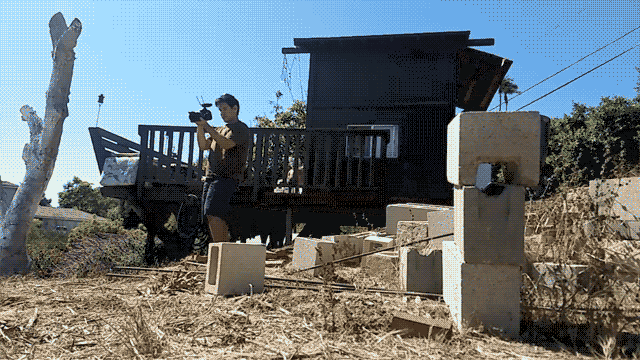 |
| 240 frames/sec Galaxy S7 |
Why?
The cannon is surprisingly powerful, but observing power isn't the same as quantifying it. A couple years ago I tried to quantify this power using a stopwatch...
I shot an orange straight up and recorded its flight time. In a residential neighborhood. Next to parked cars. Turns out straight up is only relatively straight.
 |
| Discount artist's rendition |
No cars/people/pets were hit, but the fear I realized as the orange began it's descent to earth erased my experimental concentration. Basically I don't remember the results, and didn't iterate.
Download
Video Overview
Design
Break beams! I don't know of a simpler non-invasive method for measuring velocity. Two infrared beams are positioned a set distance apart, and a microprocessor records the time for an object pass between them.
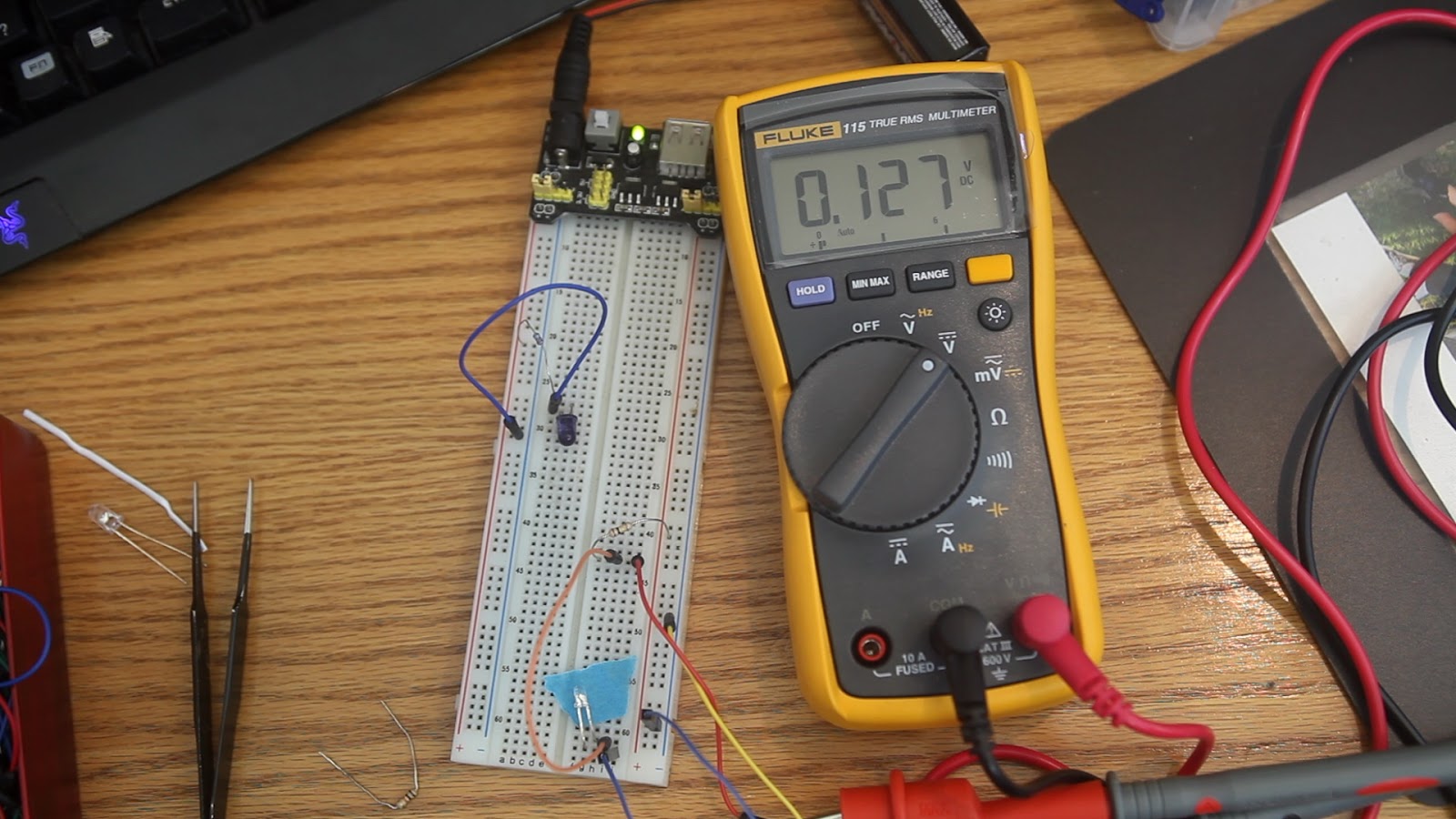 |
| Not broken - logical LOW |
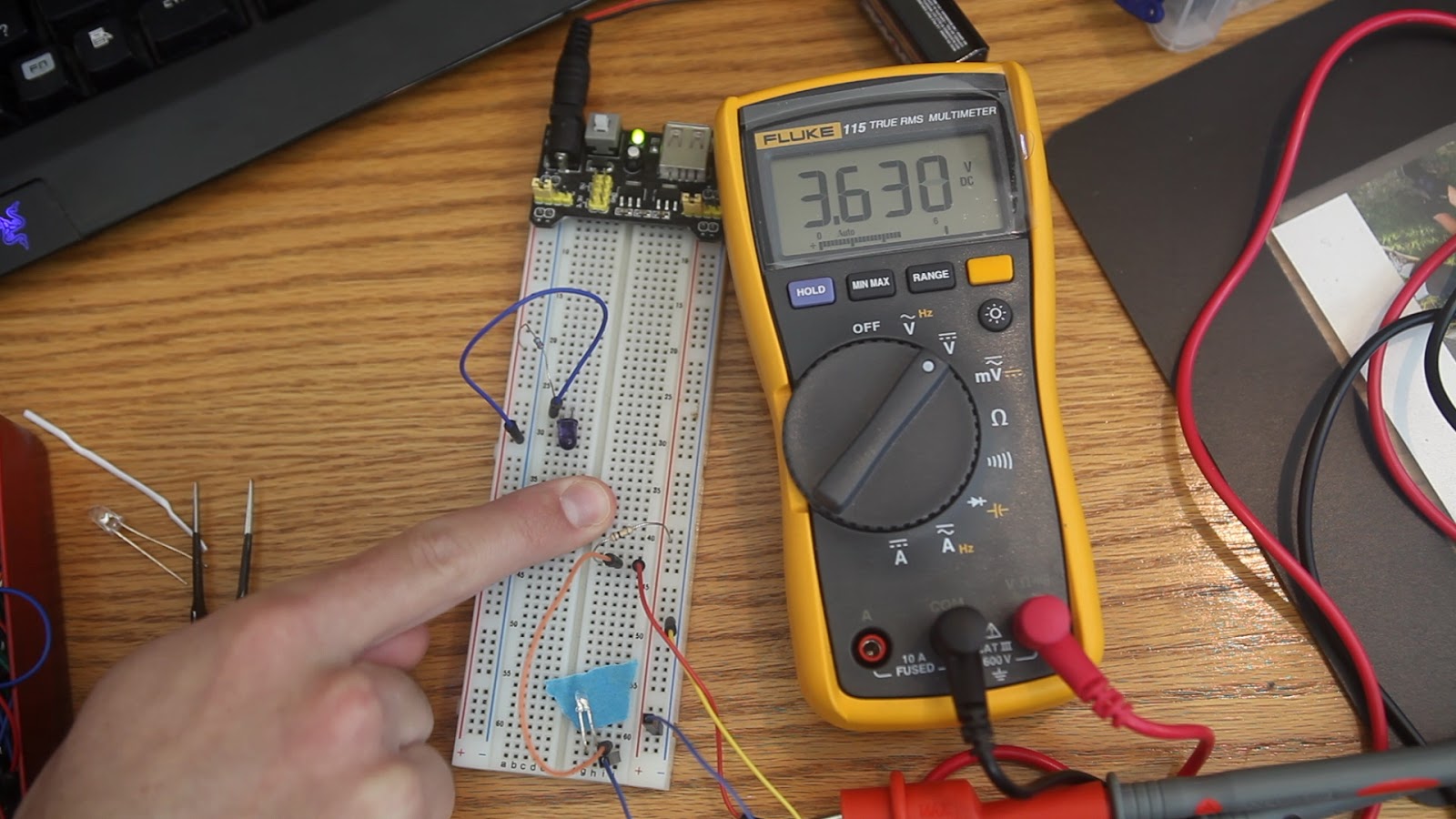 |
| Broken - logical HIGH |
A voltage divider is formed using the IR detector and a 100kΩ resistor. I have added no filtering whatsoever. Hopefully enclosing the beams in a cardboard tube will stop ambient light from affecting the infrared detectors. #NoFilter
First I cut the cardboard tube with a hacksaw, then a laser.
 |
| Laser cutting holes for the beam and set screws |
Screws are used to mount the cardboard tube to the air cannon.
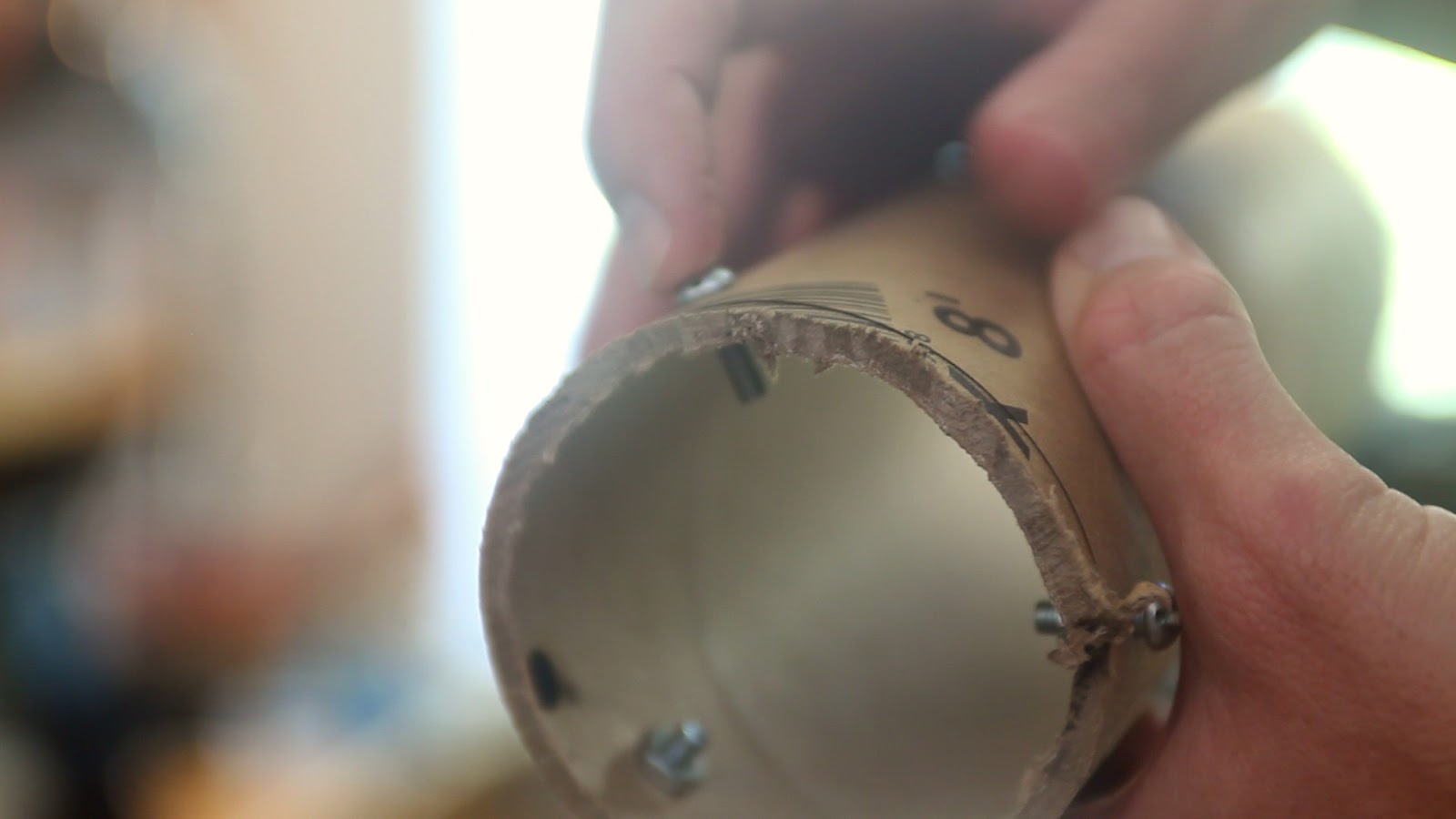 |
| Sensor mount |
Some sortof display to display the readout is needed. I upcycled an old video prop. Here's a post about said prop.
 |
| Sacrifice |
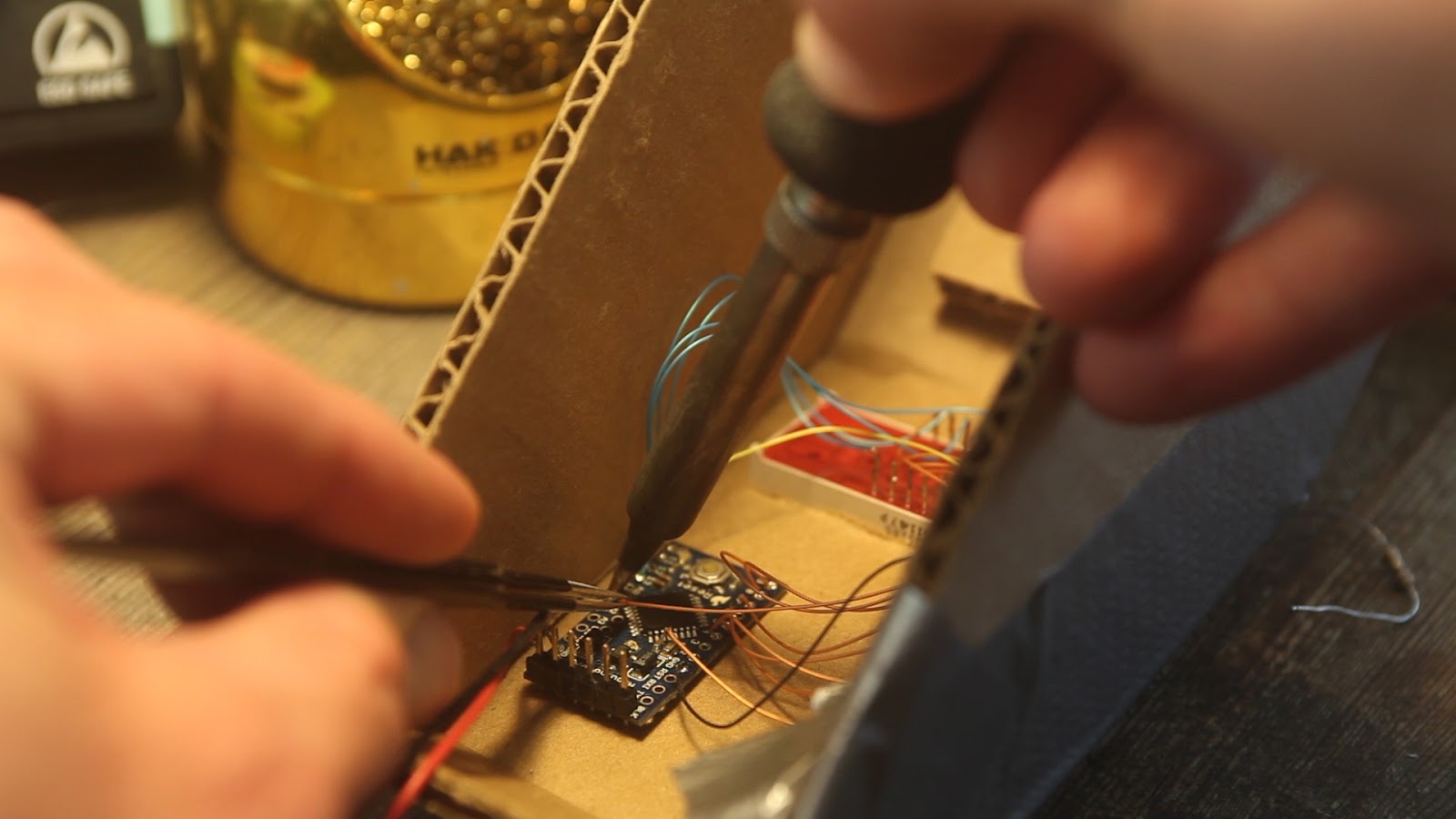 |
| Arduino Pro Mini |
 |
| Beam wiring |
 |
| Testing one beam |
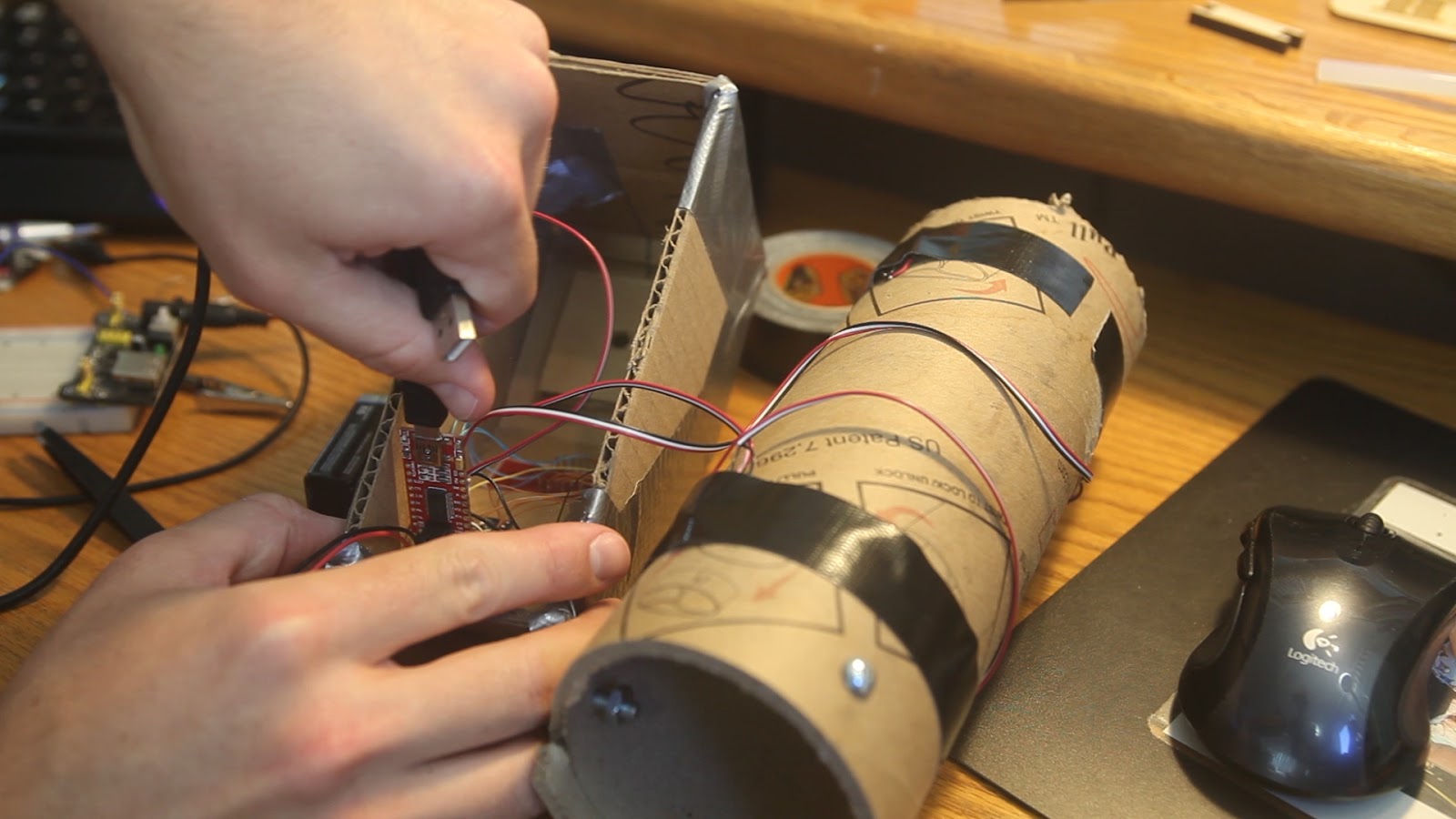 |
| Programming |
velocity = distance / time
Velocity is displayed in feet per second, which was a little stupid since I kept asking Siri to convert to mph.
The 7 segment display is multiplexed without using resistors for easy wiring. There are more details in that blog post linked above.
Function
 |
| Finished! |
My #NoFilter didn't pay off; bright ambient light rendered the sensor useless. I applied aluminum foil liberally to block ambient light.
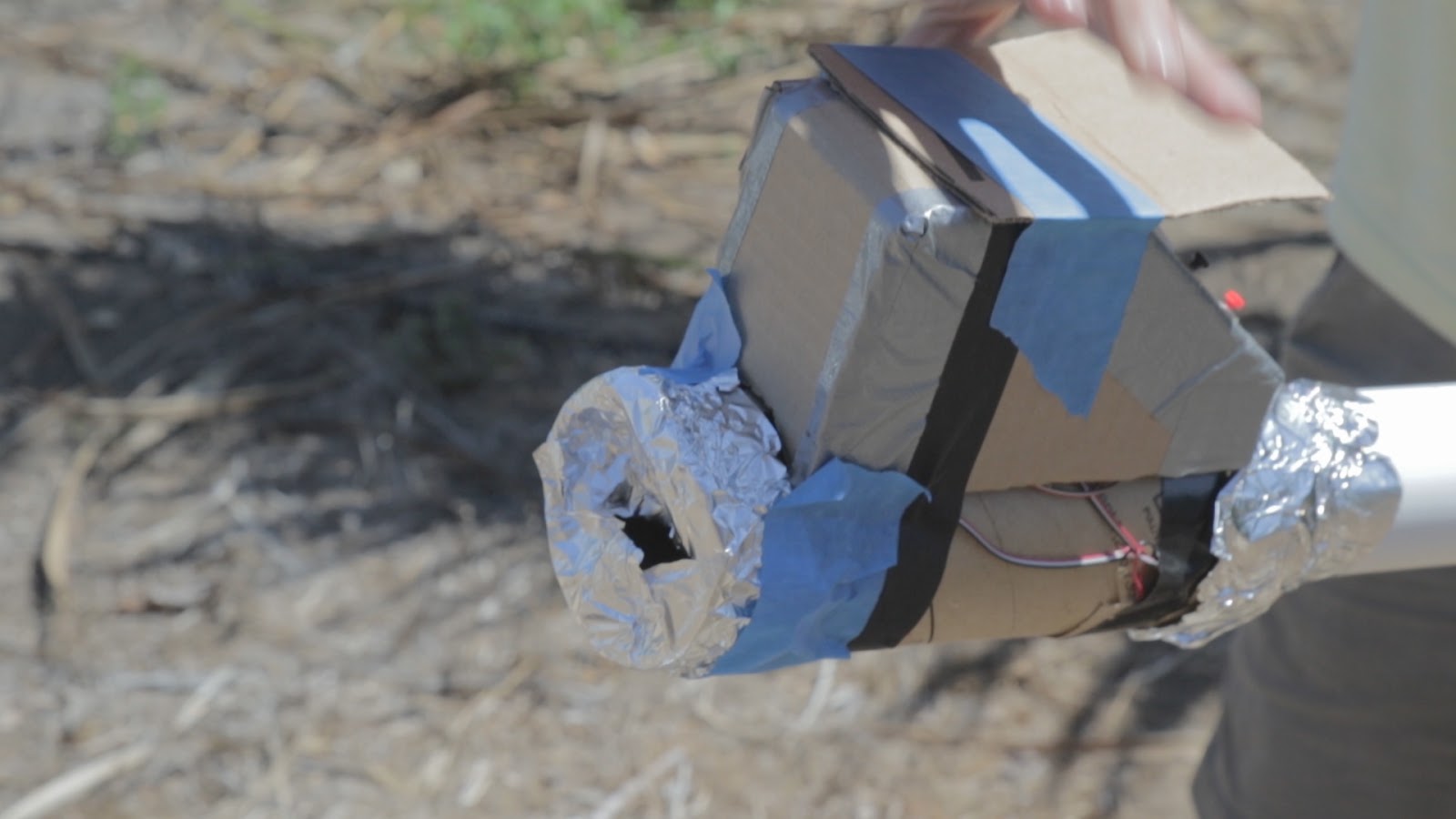 |
| Keeps the government out |
The aluminum foil looked horrible, and didn't work at all. Next shot was going to be in the shadiest spot we could find.
 |
| Shady |
Just kidding.
The underside of this deck will do.
256 fps or 175 mph!!!!!
So.. The sensor works, as long as you're shooting in the shade or at night.
How Powerful?
We know:
- Starting position and velocity = 0
- end velocity = 78 m/s
- end position = 0.95 m
- mass 0.069 kg
- Average acceleration
- Acceleration time
- Projectile energy
- Average power
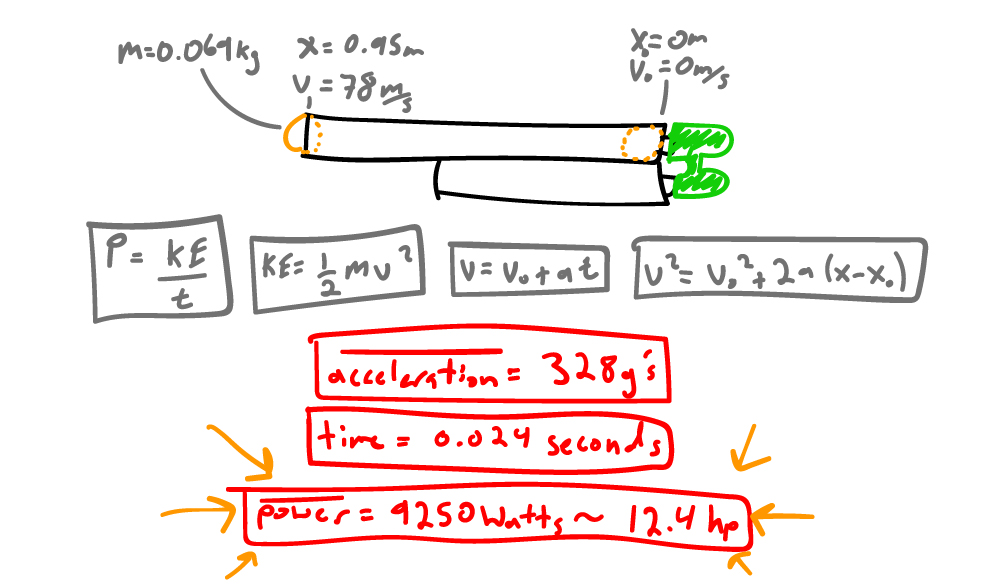 |
| Power calculation |
Results:
- Average acceleration = 328 g's
- Projectile energy = 211 joules
- Acceleration time = 0.024 seconds
- Average power = 9250 Watts ~ 12.4 horsepower
Acceleration and power blew my mind. I would not have guess the cannon is transferring nearly 10kW of power. And 328 g's means the orange is experiencing 222 N or 50 lb of force!
Conclusion
#NoFilter was dumb. I'm going to fix this with a high-pass filter and amplifier.
The cannon produces way more power than I ever thought it would.
I may be filming the cannon with a real actual high speed camera in the near future.
Air Cannon Build Secrets
There's only one thing you need to worry about: how fast can you release the pressurized air?
Sprinkler values are commonly used, but when left stock are a literal bottleneck. You need to carve them out, like removing backflow reduction features. If your cannon is making noises like a dying elephant, it means air is restricted and you're losing power. 90 degree bends don't help either, but a straight valve makes a long cannon.
The End
That's it.
That's all I got.

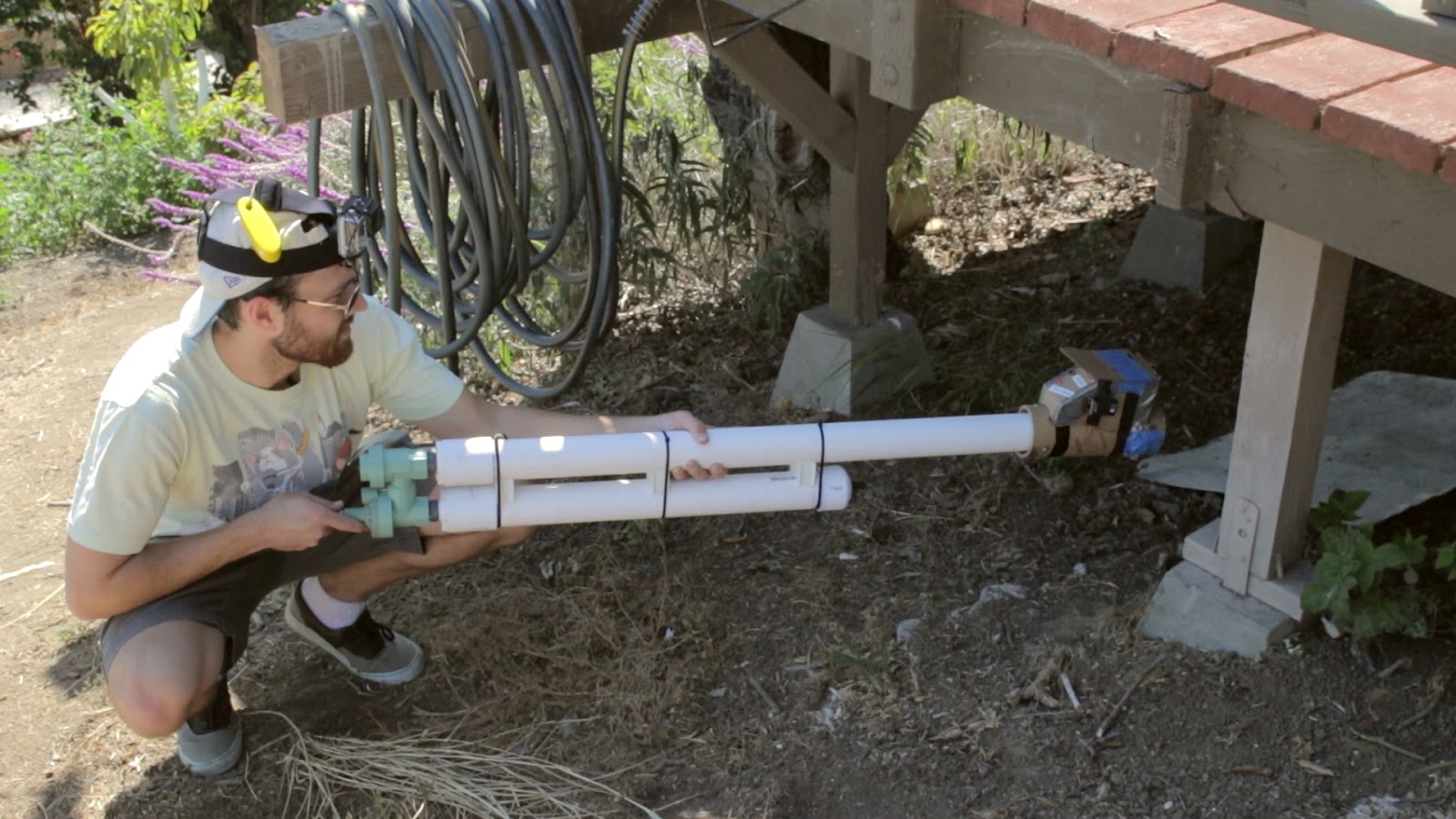
Add a comment